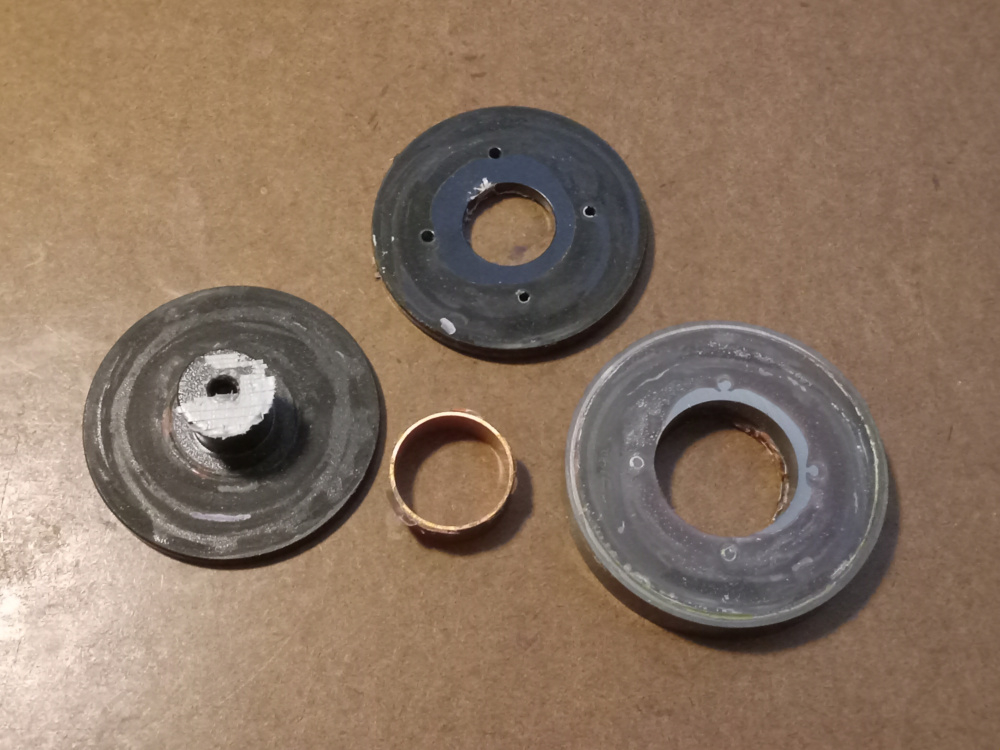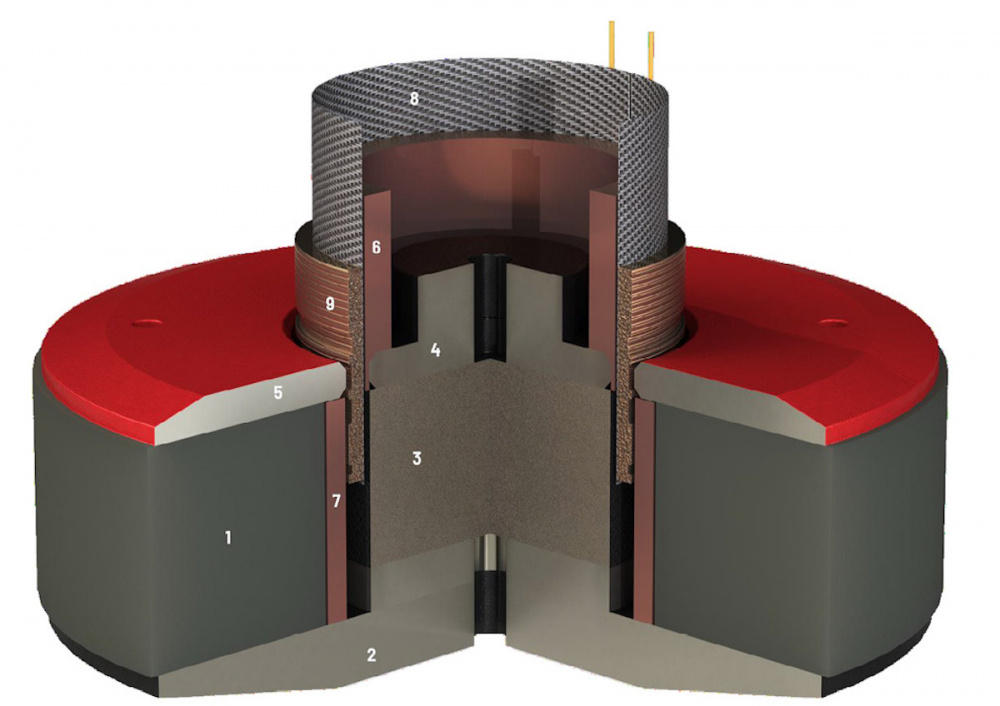Site Links
Howdy, Stranger!
It looks like you're new here. If you want to get involved, click one of these buttons!
Quick Links
Categories
Who's Online (0)
Do RS aluminum midbasses actually have shorting rings?
It turns out that I, and whoever else has stated that they did not, was wrong. I was not the only person. I had a brown-boxed RS150-8 that I tore down awhile ago. I shined a flashlight in the gap, and saw no copper gleam. I honestly thought that was the end of it. It was stated in early ad copy before that there were 2 paths in the motor, or no mention of it at all and simply said to be just a low distortion motor, but never conclusive proof to what those paths actually were. Further HD measurements of mine of the RS125-4 were shown to not really have very low HD, say -25 to -35dB, and furter bolstered my previous opinion that phase plugs were the sole provider of reducing it.
I know now for certain that they do indeed use shorting rings, and the phase plug is the second shorting path. If you committed my few previous statements to knowledge, please rewrite your data with this positive proof. Phase plug is not shown. My apologies...




Comments
Thanks for sharing this! I saw the conversation over at diyaudio and was interested in this. Interesting to me that Dayton (and probably some others too) don't make it crystal clear when there is an advantageous feature. I get why they may try to not highlight weaknesses, but if they include copper shorting rings I'd think they'd want to publicize that. I remember when the Signature series came out people had to dig through the spec sheets and marketing copy to figure out what they actually had.
Thank you Ben for the teardown, and clearing the air.
I too, was confused, after having heard multiple comments whether they have, or have not, inductance control / demodulation devices.
It takes a bold person to admit to jumping the gun.
My hat goes off to you.
I'd like to see a tear-down of an RS180. I know it doesn't have a copper cap since I knocked a phase plug out of one. The phase plug acts as an extended pole piece, of course.
Before you assert that there’s no copper, hold onto your horses @jr@mac
Spotting the copper cap isn't always that easy. Here’s a thread where long time DIYer capslock is looking for thr copper cap after removing the phase plug of driver.
https://www.diyaudio.com/community/threads/fs-b-w-fst-midrange-drivers-yellow-kevlar.370068/post-6714959
User 5th element asserts he can see it. And posts a photo. I’m not sure I can see what’s he pointing too. Isn’t copper supposed to be… well… a copper colour?
Ok so sure, it’s not a Dayton RS driver, but my point is, here’s another example of a driver where it’s not easy to spot, even for experienced users like capslock, and wolf. Depending on the design, it’s just not easy to spot.
I have the driver in the aforementioned thread…
and I can absolutely, definitively, say there’s copper in the gap…
There’s the copper sleeve on the right.
I made zero assertions - there is no copper cap on the pole piece. There may be a copper shorting ring, and you will only see that through a tear down. The ad-copy states two short circuit paths - the phase plug likely serves as one of them.
..and it isn't particularly effective at flattening impedance. The inductance rise (or lack thereof) is not a reliable predictor of distortion performance.
I do agree with your observation that inductance rise is not a reliable predictor of distortion performance.
One thing I have observed though, is that there is a high correlation between rising H3, and the demodulation device(s) for Le(x) control.
This was first explained to me by 5th element.
And after looking at it further I will have to concur.
There’s a typical rise in H3 that is true for the shape of all drivers without any demodulation/inductance control device- a slowly rising HD3 from the lower mids/upper bass continues until the drivers natural response falls off. And HD3 falls off at 1/3 the frequency where the driver does.
So drivers without these shorting rings have the highest levels of that HD3 profile. Add in some aluminium demodulation or shorting rings, and the levels would fall. Add in some copper, a la old Seas Excel, and the levels fall even further. Use copper caps aka copper sleeves, that are above, and below, as well as going through the pole piece, like the Scan-Speak original SD motor, SB Acoustics motor, B&W motors, new SEAS Excel, Tymphany TC/TG9 and fullrangers, and the rise is significantly reduced.
These ones that go above, below AND through the pole piece have the lowest and flattest impedance curve.
Eg. Purifi motor cross section; copper rings at 6 & 7 below. NB. Inner copper ring 6 extends down into the gap.

But as you said. A flat impedance curve alone is not sufficient to ensure low distortion- there are other sources of distortion, including moving parts such as the cone/dust cap, and adjacent parts, including but not limited to, the surround and spider.